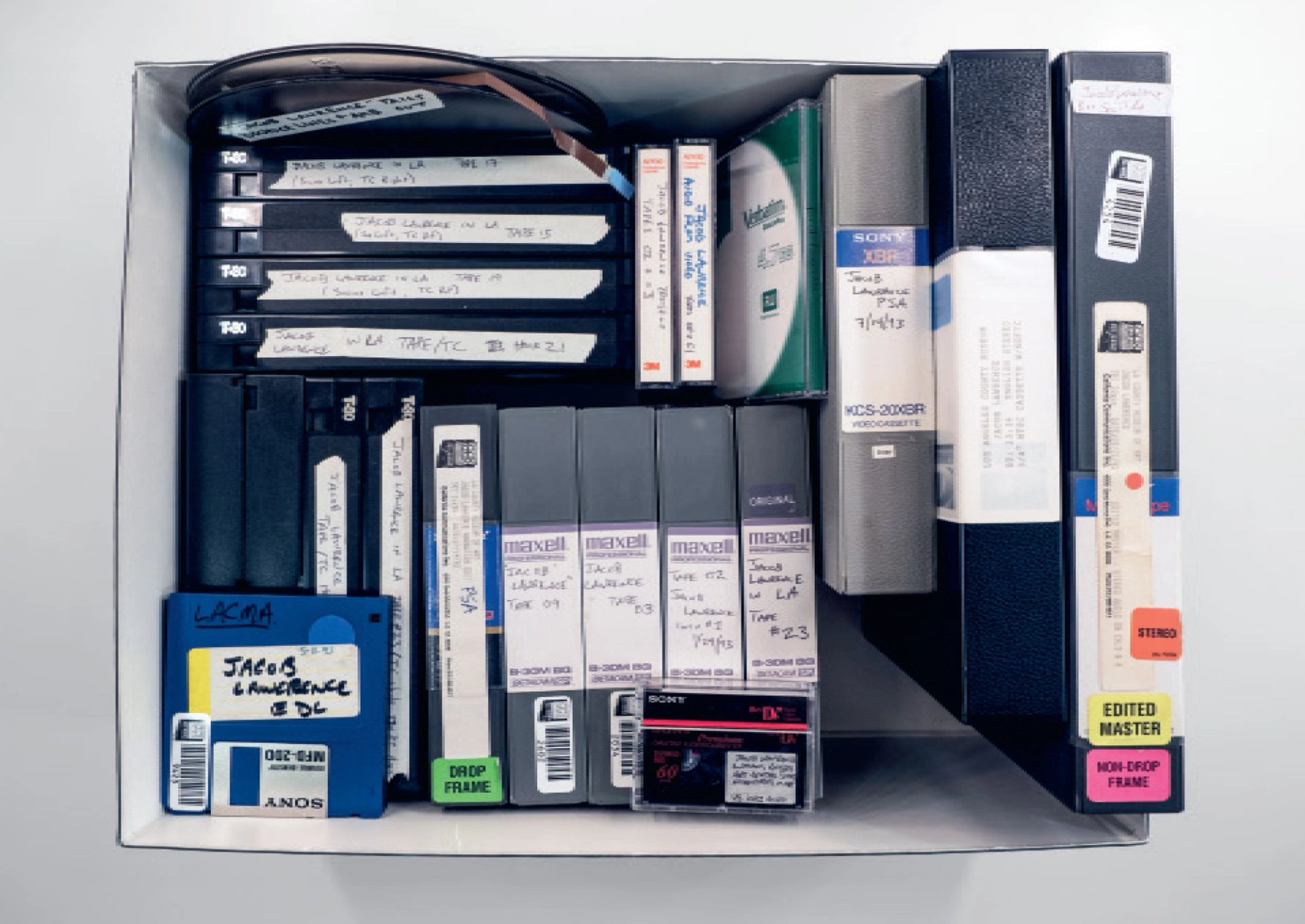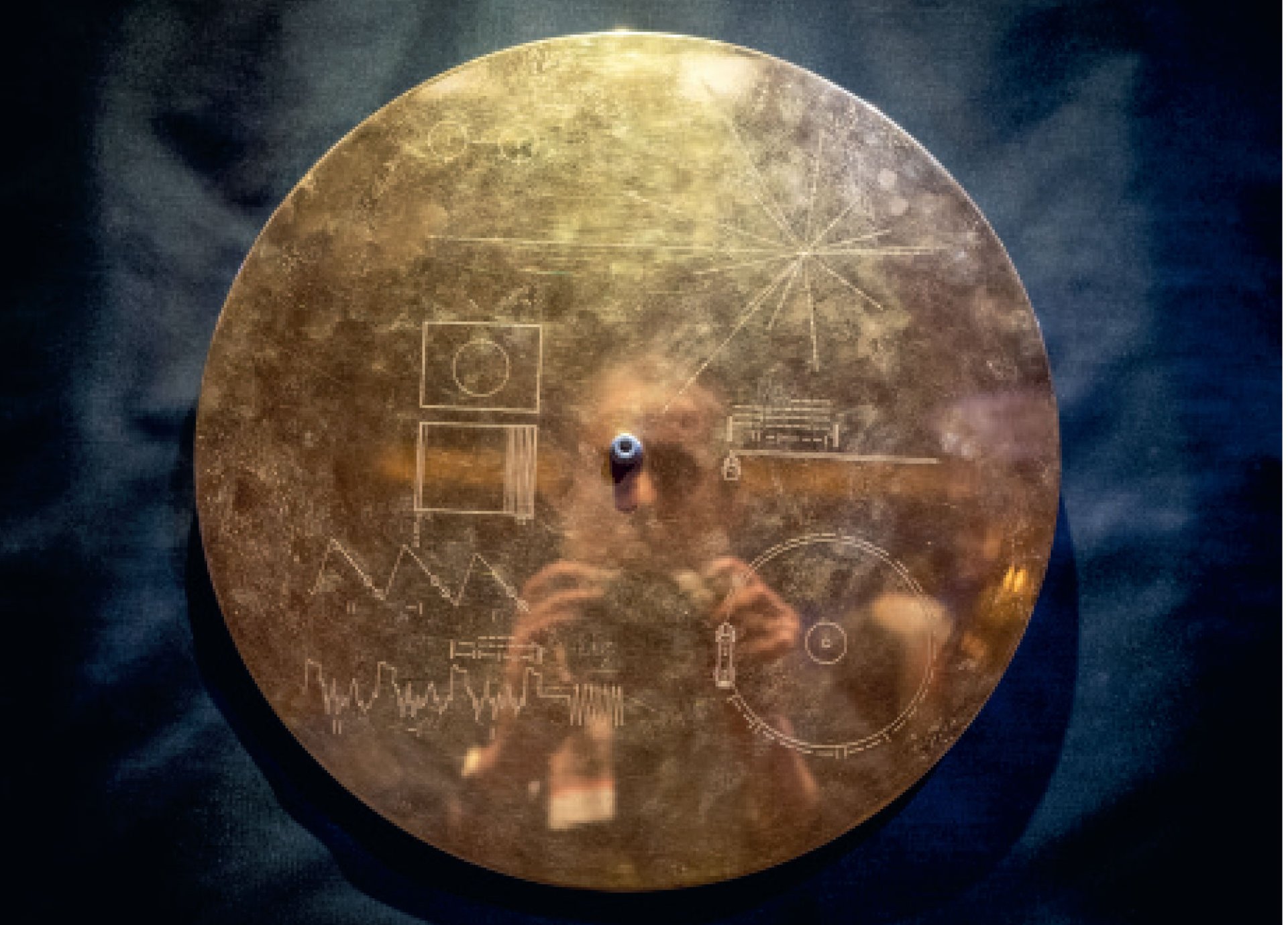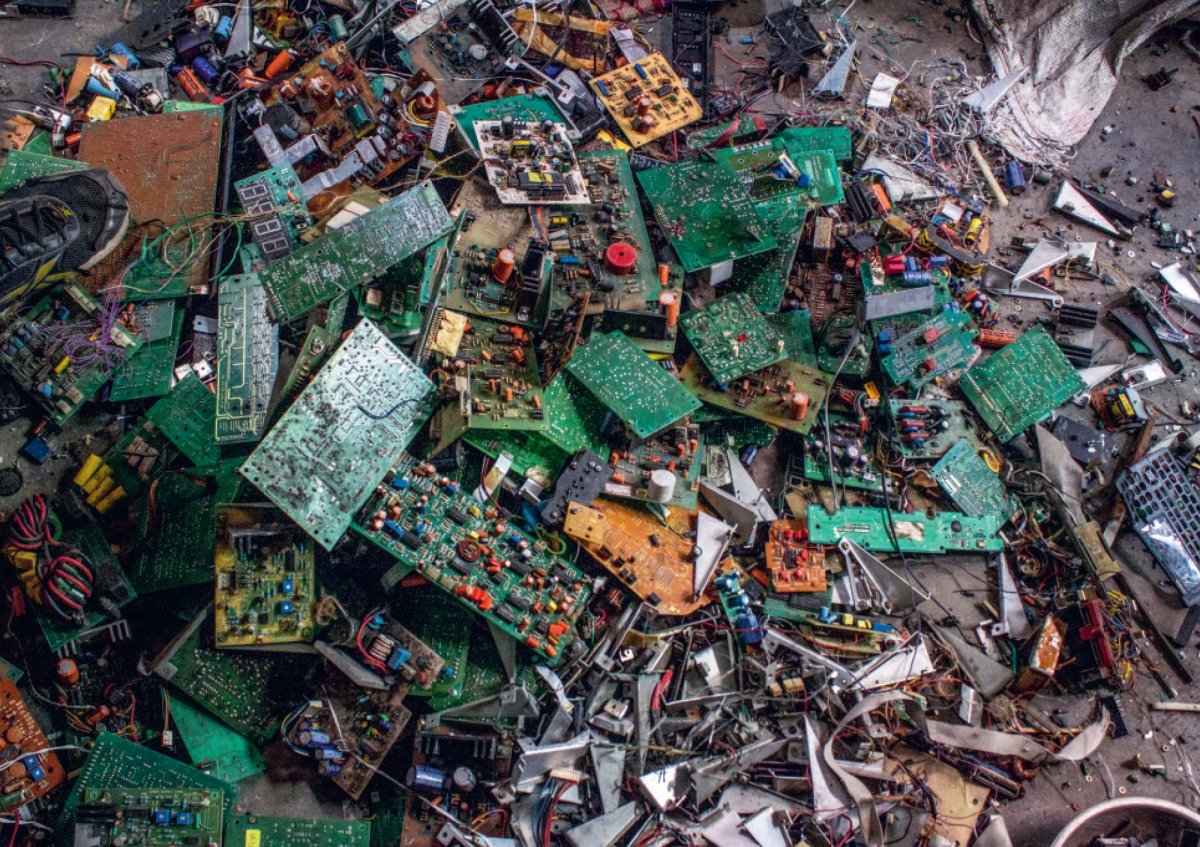Julia Christensen’s solo show, Upgrade Available, was due to open on 3 April at the Peter and Merle Mullin Gallery at Pasadena’s ArtCenter. Though the works are currently sitting on the floor of the gallery, the exhibition, like so many others, has been postponed. A book by Christensen, also titled Upgrade Available will be published in May of this year by Dancing Foxes Press. Both the book and the show involve a series of projects that date back almost a decade, in which Christensen explores the inevitable cycle of “upgrade culture”, as our most indispensable electronics quickly become obsolete, leading to a need for constant replacement, while creating an exponentially growing pile of refuse.
The artist started the series after rummaging through India’s vast e-waste industry, and it most recently resulted in an ongoing collaboration with NASA’s Jet Propulsion Laboratory to create an update to the 1977 Voyager expedition’s Golden Record, an audio-visual disc that contains information about life and culture on Earth, which is to be embedded on a potential future interstellar spacecraft.
We spoke with Christensen over the phone from her home in Oberlin, Ohio, and have included an excerpt from her forthcoming book below.

Institutional Archive, Box 2 (LACMA) (2020), from the series Archiving Obsolescence (2019– ongoing) © Julia Christensen
The Art Newspaper: In your projects, you deal with an intense level of permanence of material while also focusing on its ephemerality of use. Why does this interest you?
Julia Christensen: I've become invested in both the simultaneity and paradox of these forces—ephemerality and permanence. For instance, people preserving obsolete media in their closets makes them feel like they have some kind of control over forever, when actually this media symbolises impermanence at the same time. It's interesting to me that these forces of permanence and ephemerality are so embedded in each other and yet are so contradictory—they’re a part of the same flow but pose very different challenges. We have to zoom way out to find some sort of consistency or permanence through the technology that we design, because contemporary design processes operate in this quagmire of forces built on ever-shortening cycles of time.
What does the Golden Record mean to you?
I land on questions that drive my practice for years on end and I use these questions to frame and understand what's happening around me. When I was first in India visiting e-waste processing plants, it never occurred to me that I also needed to think about how ephemerality and obsolescence impact spacecraft design. I didn’t start off thinking that's where I would go, until I met scientists and engineers at the Jet Propulsion Lab who were asking questions very similar to mine, but in relation to spacecraft design. As they worked through engineering issues related to a conceptual spacecraft that may take 50 years to get to its destination, and designing technology that can evolve over time, they invited me to develop an art project to be embedded within this concept. That's when the Golden Record came into the conversation. It became a question of how to design a message or a story that sheds light about life on Earth—as an artwork, but also as part of the design process itself.

Julia Christensen, Golden Record Cover (Selfie), NASA’s Jet Propulsion Lab (2020) © Julia Christensen
What do you think it means that a group of top scientists are asking the same questions as artists?
I think we're at a moment in which we're all longing to think long-term, and it is more and more difficult for us to do so in the face of short-term forces that shape so much of our daily lives. Of course, there's nuance to all of this, and we experience things differently, but there's a common undercurrent that longevity feels a bit elusive at the moment.

Julia Christensen, Upgrade Available
From the essay “Technology Time”, published in Upgrade Available:
In the twenty-first century, daily life transpires in very, very short cycles. These time frames manifest in quarterly sales reports driven by accelerated market forces; significant world events vanishing in the blink of an eye into a twenty-four-hour news cycle; overwhelming “real-time” social-media feeds of opinions, news, facts, and nonfacts that leave no room for reflection on yesterday or imagination about tomorrow. In my own life: the smartphone I bought last year that I will dispose of when the battery no longer operates owing to software updates; the power cord that was compatible with my last computer but not my new one; the adapters for my old cameras, keyboards, and printers. It’s almost impossible to imagine a future beyond this week, this month, this year, because an upgrade will always be available. I call these increasingly brief pockets of time between new versions of software and hardware technology time. Technology time constrains the public imagination and vision, narrowly focusing it into a very short now. Cycles of technology time tend to lead to short-sighted decisions based on close horizons—decisions that run counter to long-term preservation of anything, including Earth itself.
Technology time is mostly imposed on the consumer; more often than I choose to upgrade, I am forced to upgrade—if I want to continue to use my tools. Planned obsolescence, the notion that products are designed to last for specific amounts of time to encourage or compel the consumer to buy the next iteration within a given time frame, was first introduced on a mass scale by the automobile industry. As early as the 1920s, car models with new exterior designs but few mechanical changes were released each year on the assumption that drivers wouldn’t want to be seen in old cars. Planned obsolescence has since become the norm in this era marked by consumerism and dominates the design and manufacturing of electronics. No one would assume that their current computer is the penultimate version. Digital software uses the trick of forward compatibility—a sound, movie, or image file can be converted to a newer version, but it can never go back. Forward march.



